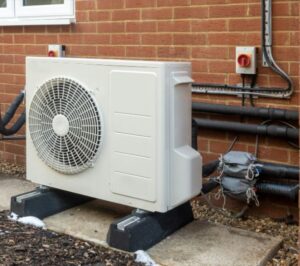Air Source Heat Pumps: Myth Buster
07 Sep 2021
Decarbonisation
For Wales to meet its target of being carbon neutral by 2050, the way our homes are powered and heated must change as we reduce our dependency on fossil fuels.
United Welsh will no longer install gas boilers at new homes that we build, and in the years ahead, the homes we provide will be retrofitted with low carbon heating solutions such as air source heat pumps to improve them for a green future.
Like a gas boiler, air source heat pumps are available with timers, programmers and smart controls to help people to heat their home efficiently.
If you’re not familiar with the technology used, here are some top myth busters to help you learn about this low carbon way to heat the home.
Myth 1: Air source heat pumps are no good for winter
Air source heat pumps still extract heat from the air to heat your home when temperatures are as low as -15°C.
Myth 2: They can only be installed in new houses
It’s not true that air source heat pumps can’t be installed in older properties; they can be installed in most properties regardless of the age of the building.
They can also be fitted in different property types too; including apartments and terraced homes.
Myth 3: They are super noisy
Air source heat pumps have advanced since they first came on the market. The noise you hear is from the pump’s fan pulling air into the system, and they make a similar level of noise to a fridge.
Myth 4: They are more expensive to run
An air source heat pump is more efficient than a gas boiler, so if it is used effectively, it could reduce the cost of heating bills. While heat pumps use electricity, which is more expensive to run currently than gas, heat pumps are so efficient that they use very little electricity, so the prices are comparable.
Myth 5: They take up a lot of space
An air source heat pump includes an outdoor unit; this is the biggest component and will be fitted outside the home, so it won’t take up space inside the property. The indoor component is connected to the outdoor component and is usually a similar size to an average boiler.
Myth 6: They require lots of maintenance
To extend the lifetime of the system and to make sure it is running safely, an air source heat pump would be serviced annually, just like a gas boiler.







